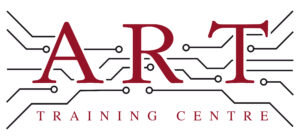Definition
Ribbon Cable is a flat and flexible cable that consists of multiple conductors arranged parallel to each other. It is commonly used in electronics to connect components, particularly in tight spaces where traditional round cables may be cumbersome. Ribbon cables are often found in computer systems, printers, and other electronic devices, serving as a vital component for data transmission and power supply.
How It’s Used in the Industry
In electronics assembly, Ribbon Cable is typically employed to connect printed circuit boards (PCBs) and various components. Technicians first cut the cable to the required length and strip the ends to expose the conductors. They then solder these conductors to the appropriate pads on the PCB or connect them to connectors. During rework, ribbon cables may need to be inspected for damage, and technicians often replace them to ensure reliable connections. Understanding ribbon cable applications is essential for both trainees and seasoned professionals, as it impacts the overall performance and reliability of electronic devices.
History & Origins
Ribbon Cable became prevalent in electronics manufacturing during the late 20th century, particularly with the rise of personal computers in the 1980s. Its flat design allowed for better organisation and space-saving in crowded electronic enclosures. As technology advanced, standards such as IPC (Institute for Printed Circuits) were developed to ensure quality and reliability in cable manufacturing. The evolution of ribbon cable has been crucial in accommodating the increasing complexity of electronic devices.
Variations
There are several types of Ribbon Cable, including unshielded and shielded variations. Unshielded ribbon cables are commonly used for internal connections where electromagnetic interference is minimal, while shielded cables provide protection against interference in sensitive applications. Additionally, ribbon cables can vary in conductor count and pitch (spacing between conductors), making them suitable for different electronic designs. Understanding these variations helps learners choose the right type of cable for specific applications.
Modern Applications
Today, Ribbon Cable is widely used in various electronics production and repair processes, especially in surface mount and through-hole assembly. Its importance lies in ensuring high-quality connections that comply with IPC standards, which are critical for reliability and performance. Ribbon cables are essential in devices such as laptops, printers, and telecommunications equipment, making them a staple in modern electronics manufacturing and professional training environments.
Practical Tips & Training
When working with Ribbon Cable, it is important to handle it carefully to avoid damaging the conductors. Technicians should use appropriate tools, such as wire strippers and soldering irons, to ensure clean connections. Regular inspection for wear and tear is crucial for maintaining reliability. Structured training and certification in electronics are important, as they provide the foundational knowledge needed to work effectively with ribbon cables and other components.


